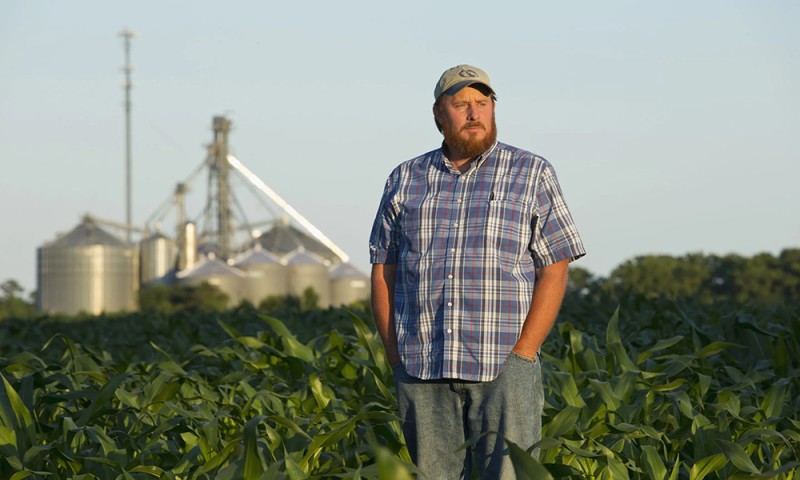
美国斥资数十亿美元为乡村铺设宽带网络,然而很多人还是很难上网。
政府应关注实际应用情况,不能只盯着网络覆盖,否则基础设施恐将沦为摆设,乡村居民也可能无缘远程医疗、在线教育以及占比近四分之一的美国远程就业市场。
当前公共讨论多聚焦于网络覆盖。联邦和各州计划确实优先考虑了偏远地区的基站建设和“最后一公里”网络传输升级。但覆盖绝不等于人们就会使用。美国乡村地区宽带网络不断扩展,很多地区实际使用率却仍然很低。
截至2021年,近五分之一乡村家庭未订购宽带服务。其中近25%的人直言“不感兴趣”。与费用或技术无关,而是需求错位。
到2023年,年轻乡村居民的宽带使用率已超过80%,但随年龄增长比例急剧下降。75岁以上仅68%使用宽带,65岁至74岁的人群中,使用率徘徊在71%左右,而50岁以下的成年人使用率超过80%。
差距既与地域相关,更与代际有关。多数年轻人已习惯上网,其余多是固守传统生活方式的美国老年人。
即便在宽带已覆盖的社区,使用率低迷的深层原因远超基础设施或资费范畴。缺乏需求驱动,网络覆盖就无法转化为实际影响。
用户行为其实折射出长期形成的习惯。一项针对密苏里州乡村宽带使用的研究发现,早期使用者多将网络用于娱乐,仅半数尝试远程医疗或在线办公等应用。即使有了网络覆盖,使用模式却停留在过去。
“断网”的代价
经济影响真实可见。在宽带使用率高的县,就业增长更强劲,灵活就业比例更高,收入提升更显著。全美约22%劳动力,也就是约3200万美国人至少部分时间选择远程办公,而疫情前仅6%。如今疫情红利消退,适合乡村的远程岗位仍持续释放机遇。然而四分之三乡村壮年劳动者虽然愿意接受培训,却没参加任何课程,主要原因是没有学习所需的宽带网络。
历史总有惊人相似之处。20世纪中叶,乡村电气化和电话普及也曾遭遇同样的困境。基础设施只是起点,还需要配套推广,融资和文化适应,尤其针对年长群体,改变行为并建立信任需要多年努力。
当代案例更具说服力。平价网络计划(Affordable Connectivity Program)帮助低收入家庭接入网络,却并没有弥合鸿沟。受益最多的是原本就认可宽带价值的群体,而未上网群体多为更年长、更孤立,以及对技术尚存怀疑的人。
乡村诊所的遭遇颇具代表性。虽然众多机构投资搭建了远程医疗平台,老年患者还是打电话问诊。俄亥俄和西弗吉尼亚医疗机构反馈,哪怕网络已覆盖,老年群体对数字应用的接受程度依旧很低。
本地雇主也很头疼。由于应聘者数字技能不足,远程岗位多有空缺。祖父母辅导孙辈在线作业很是吃力。阿巴拉契亚部分地区已覆盖网络,然而由于当地人缺乏数字素养,使用率极低。这些都是行为方面的问题,与基础设施无关。
真正的“最后一公里”
弥合宽带使用率的鸿沟必须从地方层面入手。国家补贴有助于建设网络,但更艰巨的工作在已建立信任、能开展宣传推广的地方,比如社区、学校、图书馆和诊所。在很多乡村社区,这些都是核心场所和资源,非常适合向人们解释宽带如何服务日常生活。
一些州已启动“数字领航员”计划,培训本地领袖辅导居民自信地使用互联网。还有个非常简单的想法:为什么不提供一年免费试用,让人们亲身体验宽带如何融入日常生活?如果说需求认知是障碍,试用机会可能就是桥梁。两种策略都侧重于通过使用展示价值,而不仅仅是提供网络。
不过如果缺乏本地参与,鸿沟很可能扩大。年轻人为了寻求数字领域的机遇离开,老年人变得更加孤立。宽带的经济效益取决于广泛参与,如果社区里大多数人并不上网,投资回报将大打折扣。联邦政府已打好物理基础,下一阶段需社会策略,支持教育、宣传推广和试用机会。居民需要的不仅是上网的选择,还需要登录网络的理由,比如在线问诊,辅导孩子作业,或是在乡村厨房也能赚取城市薪资的远程工作。(*)
鲍勃・赫尔曼是美国基础设施伙伴公司首席执行官,该公司是主要为美国各地提供可持续基础设施解决方案的私人投资公司。
Fortune.com上评论文章中表达的观点仅代表作者个人观点,并不代表《财富》杂志的观点和立场。
译者:梁宇
审校:夏林
美国斥资数十亿美元为乡村铺设宽带网络,然而很多人还是很难上网。
政府应关注实际应用情况,不能只盯着网络覆盖,否则基础设施恐将沦为摆设,乡村居民也可能无缘远程医疗、在线教育以及占比近四分之一的美国远程就业市场。
当前公共讨论多聚焦于网络覆盖。联邦和各州计划确实优先考虑了偏远地区的基站建设和“最后一公里”网络传输升级。但覆盖绝不等于人们就会使用。美国乡村地区宽带网络不断扩展,很多地区实际使用率却仍然很低。
截至2021年,近五分之一乡村家庭未订购宽带服务。其中近25%的人直言“不感兴趣”。与费用或技术无关,而是需求错位。
到2023年,年轻乡村居民的宽带使用率已超过80%,但随年龄增长比例急剧下降。75岁以上仅68%使用宽带,65岁至74岁的人群中,使用率徘徊在71%左右,而50岁以下的成年人使用率超过80%。
差距既与地域相关,更与代际有关。多数年轻人已习惯上网,其余多是固守传统生活方式的美国老年人。
即便在宽带已覆盖的社区,使用率低迷的深层原因远超基础设施或资费范畴。缺乏需求驱动,网络覆盖就无法转化为实际影响。
用户行为其实折射出长期形成的习惯。一项针对密苏里州乡村宽带使用的研究发现,早期使用者多将网络用于娱乐,仅半数尝试远程医疗或在线办公等应用。即使有了网络覆盖,使用模式却停留在过去。
“断网”的代价
经济影响真实可见。在宽带使用率高的县,就业增长更强劲,灵活就业比例更高,收入提升更显著。全美约22%劳动力,也就是约3200万美国人至少部分时间选择远程办公,而疫情前仅6%。如今疫情红利消退,适合乡村的远程岗位仍持续释放机遇。然而四分之三乡村壮年劳动者虽然愿意接受培训,却没参加任何课程,主要原因是没有学习所需的宽带网络。
历史总有惊人相似之处。20世纪中叶,乡村电气化和电话普及也曾遭遇同样的困境。基础设施只是起点,还需要配套推广,融资和文化适应,尤其针对年长群体,改变行为并建立信任需要多年努力。
当代案例更具说服力。平价网络计划(Affordable Connectivity Program)帮助低收入家庭接入网络,却并没有弥合鸿沟。受益最多的是原本就认可宽带价值的群体,而未上网群体多为更年长、更孤立,以及对技术尚存怀疑的人。
乡村诊所的遭遇颇具代表性。虽然众多机构投资搭建了远程医疗平台,老年患者还是打电话问诊。俄亥俄和西弗吉尼亚医疗机构反馈,哪怕网络已覆盖,老年群体对数字应用的接受程度依旧很低。
本地雇主也很头疼。由于应聘者数字技能不足,远程岗位多有空缺。祖父母辅导孙辈在线作业很是吃力。阿巴拉契亚部分地区已覆盖网络,然而由于当地人缺乏数字素养,使用率极低。这些都是行为方面的问题,与基础设施无关。
真正的“最后一公里”
弥合宽带使用率的鸿沟必须从地方层面入手。国家补贴有助于建设网络,但更艰巨的工作在已建立信任、能开展宣传推广的地方,比如社区、学校、图书馆和诊所。在很多乡村社区,这些都是核心场所和资源,非常适合向人们解释宽带如何服务日常生活。
一些州已启动“数字领航员”计划,培训本地领袖辅导居民自信地使用互联网。还有个非常简单的想法:为什么不提供一年免费试用,让人们亲身体验宽带如何融入日常生活?如果说需求认知是障碍,试用机会可能就是桥梁。两种策略都侧重于通过使用展示价值,而不仅仅是提供网络。
不过如果缺乏本地参与,鸿沟很可能扩大。年轻人为了寻求数字领域的机遇离开,老年人变得更加孤立。宽带的经济效益取决于广泛参与,如果社区里大多数人并不上网,投资回报将大打折扣。联邦政府已打好物理基础,下一阶段需社会策略,支持教育、宣传推广和试用机会。居民需要的不仅是上网的选择,还需要登录网络的理由,比如在线问诊,辅导孩子作业,或是在乡村厨房也能赚取城市薪资的远程工作。(*)
鲍勃・赫尔曼是美国基础设施伙伴公司首席执行官,该公司是主要为美国各地提供可持续基础设施解决方案的私人投资公司。
Fortune.com上评论文章中表达的观点仅代表作者个人观点,并不代表《财富》杂志的观点和立场。
译者:梁宇
审校:夏林
The U.S. has spent billions to bring broadband to rural communities—but many of the people it’s meant to help still aren’t logging on.
Unless governments focus on adoption—not just access—they risk funding infrastructure that goes unused, while rural Americans remain cut off from healthcare, education, and the growing remote job market that today represents nearly a quarter of the U.S. workforce.
Most public discussion around rural broadband has centered on availability. Federal and state programs have rightly prioritized reaching remote areas, building towers, and upgrading last-mile delivery. But access doesn’t guarantee uptake. Across rural America, broadband networks are expanding—yet adoption remains stubbornly low in many regions.
As recently as 2021, nearly one in five rural households did not subscribe to a broadband service. Among those, nearly 25% said they simply weren’t interested. This wasn’t about affordability or technical skill—it was a matter of relevance.
By 2023, broadband adoption had surpassed 80% among younger rural adults, but dropped sharply with age. Just 68% of rural adults over 75 had broadband. Among those aged 65–74, adoption hovered around 71%, compared to over 80% for adults under 50.
This divide is as generational as it is geographic. Most younger residents are already online. What remains are older Americans who haven’t found a reason to change long-standing habits.
Even in communities where broadband is already available, uptake lags for reasons that go beyond infrastructure or cost. Without demand, access doesn’t translate into impact.
These usage patterns reflect long-established habits. A study of broadband deployment in rural Missouri found that most early adopters used their new connection primarily for entertainment. Only half engaged with applications like telehealth or remote work. Even after access is delivered, usage often stays stuck in the past.
The cost of disconnection
The economic implications are real. Counties with high broadband adoption see stronger job growth, higher self-employment, and greater income gains. Nationally, about 22% of the workforce—roughly 32 million Americans—now works remotely at least part of the time, compared to just 6% before the pandemic. While the Covid-era boom in remote or hybrid work has cooled, the share of remote-capable jobs remains an enduring opportunity for rural communities positioned to take advantage of it. But while three-quarters of mid-career rural workers say they’re willing to train for those jobs, most say they haven’t taken any courses to do so — often because they lack the broadband access to even start.
We’ve seen this before. In the mid-20th century, rural electrification and telephone service faced similar hurdles. Infrastructure wasn’t enough. Outreach, financing, and cultural adaptation were required — especially to reach older residents. It took years of effort to shift behavior and build trust.
There are modern parallels. The Affordable Connectivity Program helped low-income households get online—but it didn’t close the gap. Those who benefited most were already inclined to value broadband. The people who remained offline tended to be older, more isolated, and less convinced of its relevance.
Rural clinics have seen this firsthand. Many invested in telehealth platforms—only to find older patients still preferred phone calls. Even basic digital engagement, like using patient portals, lags in many areas. In Ohio and West Virginia, providers report low digital adoption among seniors despite widespread broadband availability.
Local employers face similar challenges. Remote roles go unfilled because applicants lack digital confidence. Older caregivers often struggle to support kids’ online homework. In parts of Appalachia, internet access exists, but without digital literacy, it remains underused. These are behavioral problems. They have nothing to do with infrastructure.
The real last mile
Solving the broadband adoption gap must begin at the local level. National subsidies help build networks, but the harder work happens in places where trust already exists and outreach can take hold — in neighborhoods, schools, libraries and clinics. These places and resources serve as anchors in many rural communities and are well positioned to explain how broadband supports everyday needs.
Some states have created digital navigator programs that train local leaders to help residents use the internet with confidence. And here’s an idea that’s as simple as it gets: why not offer a year of free service to help people figure out how broadband fits into their daily lives? If relevance is the hurdle, trial access may be the bridge. Both strategies focus on showing value through use, not just access.
But without local engagement, the gap is likely to grow. Young people may leave in search of digital opportunity. Older adults may become more isolated. The economic benefits of broadband depend on broad participation. If large portions of a community remain offline, the return on investment will fall short.The federal government has laid the physical foundation. The next phase requires a social strategy—one that supports education, outreach, and trial access. Residents need more than the option to connect. They need a reason to log on, whether it’s talking to a doctor from home, helping their child with homework, or landing a remote job that pays a city salary from the country kitchen table.
The opinions expressed in Fortune.com commentary pieces are solely the views of their authors and do not necessarily reflect the opinions and beliefs of Fortune.

